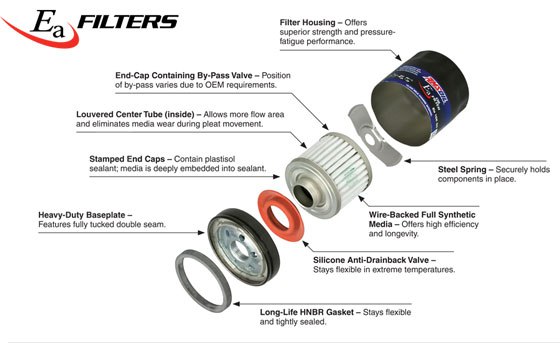Do you trust your cold air filter element to protect your motor? Your average OEM cellulose filter is excellent to good when compared to these oil wetted gauze filters. The easiest way to tell is just look for the word “nanofiber”. Of course that’s key but the matter in which the material is sprayed on […]
You are browsing archives for
Category: Filters
Can I Use The Same Oil Filter Twice?
Oil Filter Questions Answered – Use an Oil Filter Twice? John Baker|Jun 14, 2019 2:00 PM In theory, your filter has a simple job: capture wear-causing contaminants and hold them in the filter media so they don’t run amok inside your engine. But lots of factors can throw a wrench into this plan, which can […]
Latest Synthetic Oil Filter material vs ...
Synthetic Oil Filters vs Regular (Cellulous) Oil Filters Ed Newman | Jul 26, 2017 8:51 AM Early automobile engines didn’t use oil filters, or air filters for that matter. For this reason frequent oil changes were a must. Motor oil quality wasn’t really that important in those days, anyway. It was the discarded by-product of […]
Perfect Pairing:Signature Series Motor O...
Perfect Pairing:Signature Series Motor Oil and Ea® Oil Filters Combining premium motor oil with a premium oil filter is necessary for total engine protection. Complete engine protection is a team sport. The long-term effectiveness of a quality motor oil is often hindered by poor filtration. At the same time, the superior capabilities of a premium […]



